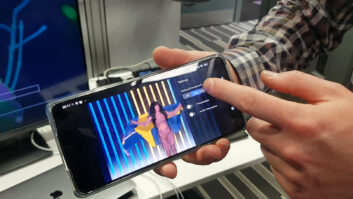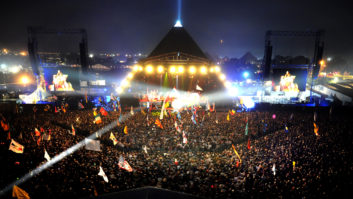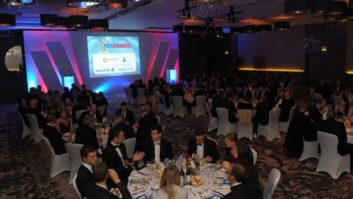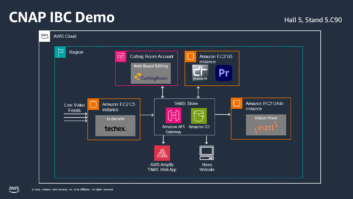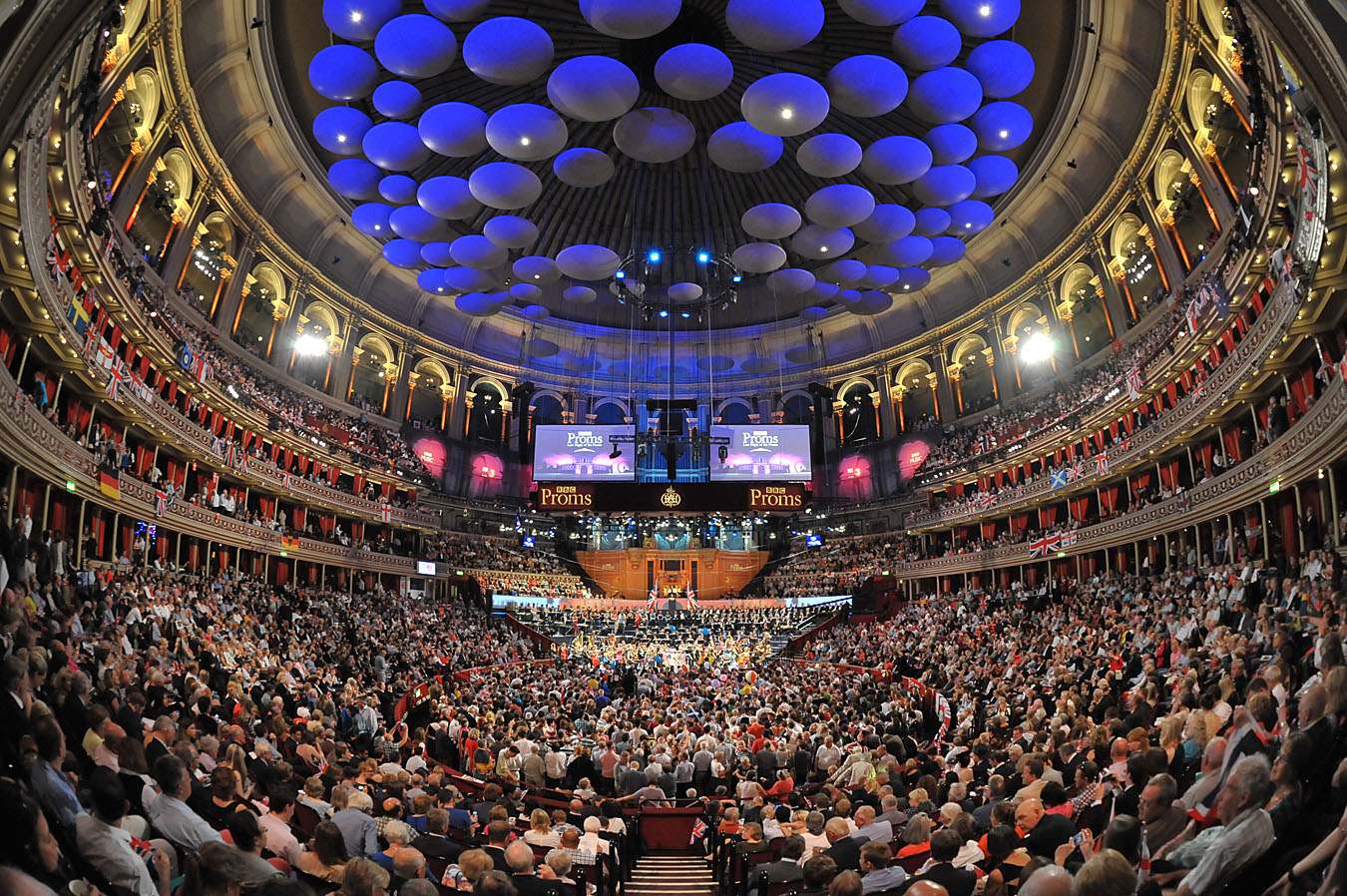
More than 90 concerts over eight weeks, including four Last Night celebrations around the UK, will make up the 122nd season of Henry Wood Promenade Concerts starting on 15 July. In the spirit of Wood’s founding vision to make the best music available to the widest audience, every Prom is broadcast live on BBC Radio 3, and in 2016, BBC Radio 2 and Radio 6 Music each broadcast multiple Proms. In addition, around 25 concerts will be televised including, of course, the renowned Last Night of the Proms. In 2015, the television audience for this spectacular peaked at five million viewers.
Francesca Kemp, who will serve as BBC TV executive producer for the season, has worked for the BBC for over 30 years, starting with Radio 3, before moving into music TV as a researcher, producer and director.
“We start planning the season as soon as the previous one ends,” Kemp explains. “The BBC Proms director is responsible for planning each season of concerts from the Royal Albert Hall and other venues. Between the autumn and early spring, as his plans firm up, we discuss with the channel controllers and head of BBC music commissioning, Jan Younghusband, which of them we will cover for television, and confirm when and where they will be shown.”
Many of the concert broadcasts are shown on BBC Four, but some are seen across BBC One, Two and online platforms. During the Proms season, the BBC also produces a weekly magazine show called Proms Extra, shown on Saturday evenings on BBC Two, featuring star guests from the season, concert reviews, previews, short films and live studio performances.
“This year we will have six producers working across the season, some for many months, others for a few weeks,” Kemp continues. “Four of these producers are members of the music TV department, while two others are joining us from other parts of the BBC. The production and editorial teams are usually on board by late May and continue through to the end of the season in mid-September. Our teams work very closely with colleagues across the BBC, particularly with the Proms concerts team, who plan and manage the season, and with our colleagues in Radio 3, who broadcast every Prom live.”
The demands of directing
One of the directors used by Kemp is Bridget Caldwell. What does she see as the qualities needed for a director on such a high profile series? “A real understanding of music. I see one of my roles as guiding the viewer through the music. Each piece demands its own unique response. I try to make sense of the music; pick out the instruments with the tune, but then also reflect the countermelodies and anything interesting happening in the percussion.
Sometimes this is easy, especially with a well-established piece of music, but it is much harder with a new commission when, more often than not, there’s no recording of the piece to hear. Then you have to study the score and try and work out how it sounds and what the composer’s trying to say.”
Caldwell adds that resilience and a good sense of humour are also essential qualities if a director is to succeed. “You may have scripted a concert and then, two days before the performance, discover the conductor wants to change the orchestra layout, which means starting all over again. Or you turn up on the day and discover that all the percussion shots you’ve scripted are now masked by microphones or other instruments. Or perhaps the soloist wants to perform further upstage, so again your scripted shots are all blocked, and you need to adapt, and quickly.”
So, just how far in advance of a concert will the director get to see the music? Caldwell reports that the time frame can vary. “A Beethoven symphony I’ll probably get four to six weeks in advance, while a new commission normally will get to me about a week before. And encores have been known to turn up on the day!”
Great operators
Normally six cameras, including one on a jib, are used for the concerts, although this number will increase for the Last Night. “I work with the best operators in the business. I’m always amazed at what a brilliant job they do in such a short amount of time. Plus, the first time they hear the music is the day of the rehearsal, and yet they respond as if they’ve been living with the pieces for weeks on end.”
Although there may be a music rehearsal scheduled for first thing in the morning, the stage will be cleared for another a little later. Once that is completed, the first orchestra will be set back. “This means that players and microphones will be in slightly different positions so all the shots you’ve carefully planned for flutes or trumpets need to be quickly checked.”
Not that there is always an opportunity for any rehearsals. That luxury depends on the orchestra’s availability. “I’ve gone on air not having seen an entire symphony or only bits of a piece. And for the Last Night of the Proms, you don’t always get to hear everything because it’s such a long concert.”
Audio activities
Television sound is produced by The Sound Alliance, an independent specialist company which won a TVBAward in 2015. “We provide a sound mobile unit and crew, and pass on the mixed audio to the OB provider, Visions,” explains Andy Payne, TV sound supervisor and a director of The Sound Alliance. “In the Visions truck, presentation is added. However, on simpler Proms, we handle this element as well.”
He adds, “Our own mobile is equipped with Stagetec Nexus and Cantus mixing along with 128-track Pyramix recording and editing. Monitoring is Bowers and Wilkins in fully Dolby specified 5.1. Television and radio each have a separate mobile facility connected together for sharing with MADI.”
Payne reveals that the TV output is delivered in Dolby 5.1 surround, with stereo derived from this feed. “There are challenges in producing stereo without compromise from 5.1, and TV uses a somewhat different approach to microphone coverage to Radio 3. For radio, the mix is principally in stereo and can be expanded up to a 4.0 surround feed, which is accessible online. Although there are necessarily independent approaches to microphone coverage, television and radio share a good deal of what is rigged. Schoeps, DPA and Sennheiser type microphones make up the main coverage. Mostly, Schoeps and Neumann are used for on-stage soloist and spot mics, but others creep in from time to time. On occasion, some vintage types can be seen, but this is usually a visual design feature rather than any audio consideration.”
Seeing the light
The lighting design for the Proms has to cope with the wide range of concerts and events that happen over the two-month period, even though not all the requirements are known at the start of the season. “Together with the busy festival schedule of at least one concert per day, we have little or no time to make changes to the rig, and so we have evolved a flexible design which we know from experience should provide what is needed,” says Bernie Davis, who has been the Proms lighting designer since 1993.
“From the start, it is important for us to understand the needs of this unique event, with the first priority being the comfort of the orchestras and choirs. They must be able to read the music without lit music stands, they must be able to see the conductor, and they must not be dazzled. Beyond that, the concerts must look good in the hall and, when necessary, on television. The lighting rig must be silent to meet the demands of Radio 3 and the Proms audience.
Davis says that people’s expectation of lighting has changed over the years, and designers have managed to push the boundaries of what is possible while still working within the limits of each environment. “It used to be just ‘white light’ for classical music, but now we try to enhance the mood with the careful use of colour around the hall, and graphics on the LED display panels behind the orchestra. These panels can show anything from abstract and subtle patterns to moving scenery. The important thing is to know when to use which!”
The lighting design for the Proms now uses some of the latest lighting equipment available, and that has actually helped to reduce costs. “We now work with a much smaller crew than when I started over 20 years ago,” Davis continues. “The usual crew for the hall for a TV Prom day is now just lighting designer and two electricians, and a regular Radio 3 concert would have just one electrician. The start of the season takes more crew though, and we take two days just to rig all the lighting and make all the systems work. The following day is a focus day when each of about a thousand lights get set.”
After that is an opportunity to catch up with other jobs in the background, leaving the team ready to balance the lighting and start rehearsing. Once the grid is set 10m over the stage it cannot move again for two months as a range of sound slings are set underneath.
Davis states that the small pool of crew are hand-picked for their skills, because they don’t just have to be experienced lighting technicians, but also be willing and able to climb the overhead grid for necessary maintenance. “In addition, they need to have the skills and knowledge to deal with orchestras and conductors on a day-to-day basis. But we all love the Proms and look forward to every season.”
